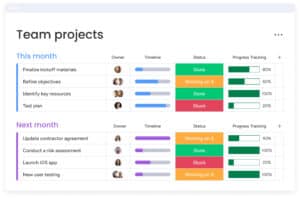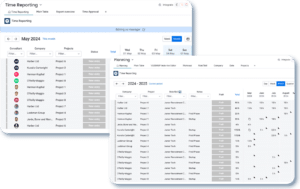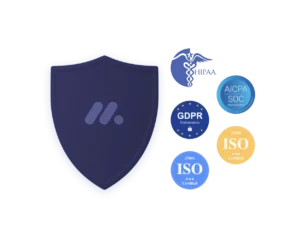Introduction
What Are Cross-Functional Project Teams?
In today’s fast-paced and increasingly complex business landscape, the term “cross-functional project teams” is more relevant than ever. These are teams composed of individuals with diverse skill sets and expertise, coming from different departments or areas within an organization. The idea is that by bringing a variety of perspectives together, the team can produce more innovative and comprehensive solutions to complex problems. This article aims to provide you with a detailed guide on effective strategies for managing cross-functional project teams.
The Importance of Effective Management
Managing such a team can be both a rewarding and challenging experience. While the diverse skill sets make for a resourceful team, they also introduce an array of challenges that typical, more homogeneous teams don’t usually face. That’s why strategies for managing cross-functional project teams are critical for project success. This kind of management requires a nuanced approach that balances the benefits and challenges that come with diverse, cross-departmental collaboration.
Whether you are a project manager, a department head, or an executive, understanding how to harness the full potential of a cross-functional team is crucial for driving project success and ultimately, achieving business objectives.
Why Should You Keep Reading?
In the coming sections, we’ll delve deep into various aspects of managing cross-functional project teams. We’ll look at why traditional management strategies often fall short and explore the foundational principles and specific strategies that can help you manage your team effectively.
The Anatomy of a Cross-Functional Team
What is a Cross-Functional Team?
In the world of project management, a cross-functional team is more than just a buzzword; it’s a strategy for maximizing innovation, problem-solving, and efficiency. A cross-functional team consists of members who come from various departments within an organization, each bringing a unique set of skills and expertise to the table. For example, a typical cross-functional project team could consist of marketers, engineers, designers, and finance professionals, all collaborating to achieve a common objective. Understanding the anatomy of such a team is the first step toward mastering strategies for managing cross-functional project teams.
Key Roles in a Cross-Functional Team
Managing a cross-functional team starts with understanding the key roles that make up the unit. These roles can vary depending on the project’s needs but usually include:
- Project Manager: Responsible for overall project coordination and ensuring that milestones are met.
- Technical Experts: Individuals with specialized knowledge in fields like IT, software development, or engineering.
- Business Analysts: Responsible for evaluating the business impact of the project.
- Creative Team: Designers, writers, and other creative experts who handle the aesthetics and user experience.
- Operations Staff: Those who ensure that logistics and processes run smoothly.
Benefits and Challenges of Cross-Functional Teams
Benefits
- Innovation: Different perspectives can lead to out-of-the-box solutions.
- Efficiency: Tasks are often completed more quickly when a diverse set of skills is available.
- Skill Development: Team members can learn from each other, broadening their skill sets.
Challenges
- Communication: Members from different departments may not speak the same “language,” leading to misunderstandings.
- Conflict: Varied approaches and priorities can lead to internal friction.
- Resource Management: Balancing the time and resources of team members from different departments can be complicated.
Understanding both the benefits and challenges is critical for applying the right strategies for managing cross-functional project teams.
Omnitas Newsletter
Sign up for our monthly newsletter to stay up-to-date on our latest blog articles, videos and events!
Thank you!
You have successfully joined our subscriber list.
Why Traditional Management Techniques May Fall Short
Differences Between Managing Traditional and Cross-Functional Teams
The shift from managing a traditional team to a cross-functional one is akin to playing chess after mastering checkers; the basic principles might be similar, but the strategies and complexities differ significantly. Traditional teams usually consist of members with similar skills and backgrounds, which can make management relatively straightforward. However, when it comes to managing cross-functional project teams, the dynamics change drastically. The diversity in skills, experiences, and departmental cultures adds layers of complexity that traditional management techniques are often ill-equipped to handle.
Specific Challenges in Managing Cross-Functional Teams
Given the heterogeneous nature of cross-functional teams, several unique challenges arise:
- Alignment of Goals: Different departments often have different KPIs and objectives, making it challenging to align everyone toward a single goal.
- Cultural Differences: Each department may have its unique work culture, creating potential friction when merged into a single team.
- Expertise Silos: With specialists from various fields, there’s a risk of forming silos, where team members are reluctant to step out of their comfort zones.
These challenges necessitate different strategies for managing cross-functional project teams, apart from what one would apply to more traditional teams.
The Need for Specialized Strategies
So, why do traditional management strategies often fall short?
- Limited Flexibility: Traditional techniques may not offer the adaptability required to manage a diverse team.
- Inadequate Communication Frameworks: Standard communication protocols may not suffice for team members who are used to different jargon and departmental norms.
- Failure to Leverage Diversity: Without a strategy to harness the varied skills and viewpoints, the team might fail to capitalize on its potential for innovation and problem-solving.
Understanding these limitations is the first step toward developing effective strategies for managing cross-functional project teams.
Foundational Principles for Managing Cross-Functional Teams
Importance of Clear Objectives
Before diving into the intricacies of managing a cross-functional team, it’s essential to establish a strong foundation. Clear objectives serve as the cornerstone upon which successful strategies for managing cross-functional project teams are built. When team members understand the end goal, it aligns their efforts and provides a framework within which they can freely contribute their skills and expertise.
Communication is Key
Communication acts as the lifeblood of any team, but it is especially crucial when managing cross-functional project teams. Due to the diverse set of skills and backgrounds, the chances of miscommunication or misunderstanding are inherently higher. A proactive communication strategy can help bridge gaps, foster a culture of openness, and ensure that everyone is on the same page.
Adaptability and Openness to Change
In a rapidly evolving business landscape, adaptability is no longer just a nice-to-have; it’s a must-have. Teams that can adapt to changing circumstances are more likely to overcome obstacles and find success. This is particularly true for cross-functional teams, where the diversity in skills can either be a point of strength or a source of conflict. Being open to change and adaptive in approach is key to managing such teams effectively.
Summary of Foundational Principles
To summarize, three fundamental principles can greatly influence your effectiveness in managing cross-functional project teams:
- Clear Objectives: Always start with a clear goal in mind to guide the team’s efforts.
- Open Communication: Build an environment where team members can freely share ideas, concerns, and feedback.
- Adaptability: Equip your team with the tools and mindset needed to adapt to unexpected challenges and changes.
Adhering to these foundational principles sets the stage for implementing more specific strategies for managing cross-functional project teams, which we will explore in the next section.
Strategies for Effective Management
Managing a cross-functional team requires a specialized set of strategies that go beyond traditional management methods. In this section, we’ll delve into practical strategies for managing cross-functional project teams effectively.
Setting Clear Goals and Objectives
Setting SMART goals (Specific, Measurable, Achievable, Realistic, and Timely) can be highly effective when managing cross-functional project teams. Doing so helps to align the team around a common purpose and provides a roadmap to gauge progress.
- Action Tip: Use collaborative tools to document objectives and ensure that they are visible to all team members.
Fostering Open Communication
Encouraging open and honest communication is vital for the success of cross-functional teams. This extends beyond just talking about project-related issues; it also involves creating an atmosphere where team members feel comfortable sharing their ideas and concerns.
- Action Tip: Implement regular team meetings and one-on-one check-ins to foster communication.
Facilitating Collaboration
Collaboration is the fuel that drives cross-functional teams. Team-building activities, both formal and informal, can strengthen bonds and enhance collaboration.
- Action Tip: Use collaboration platforms that allow seamless sharing of documents and project timelines.
Providing the Right Tools and Resources
Equipping your team with the right tools is essential for effective management. This includes not just technical tools but also educational resources to help team members understand best practices in cross-functional collaboration.
- Action Tip: Train your team on project management software that caters to cross-functional projects.
Monitoring and Adjusting
Adaptability is key in managing cross-functional project teams. This means monitoring performance metrics, taking feedback seriously, and being willing to adjust strategies as the project progresses.
- Action Tip: Establish a feedback loop that allows for quick identification of issues and a mechanism for implementing solutions.
Summary of Effective Management Strategies
To effectively manage a cross-functional team, one must integrate a blend of traditional management techniques with strategies uniquely suited for this diverse form of teamwork. By setting clear goals, fostering communication, facilitating collaboration, providing necessary tools, and staying adaptable, you can increase your odds of successfully managing cross-functional project teams.

Challenges to Anticipate and Mitigate
While the advantages of cross-functional teams are numerous, there are also challenges to consider. Anticipating and mitigating these challenges are essential strategies for managing cross-functional project teams successfully.
Conflict of Interests and Goals
Given the diverse backgrounds of team members, conflicts are bound to arise. These can stem from different departmental goals, variations in work culture, or even contrasting approaches to problem-solving.
- Mitigation Strategy: Regularly align the team’s objectives and maintain an open channel for conflict resolution.
Language and Communication Barriers
With experts from different domains, terminologies and jargon may differ. This can lead to misunderstandings and hamper the progress of the project.
- Mitigation Strategy: Establish a common vocabulary that everyone agrees upon and encourage team members to ask for clarification when in doubt.
Decision-making Delays
Decision-making can become a cumbersome process, especially when multiple departments are involved, each with its own set of priorities and procedures.
- Mitigation Strategy: Appoint a dedicated decision-maker or establish a streamlined decision-making process that everyone understands.
Resistance to Change
Change can be uncomfortable, and people from different departments may be resistant to new methods and processes.
- Mitigation Strategy: Conduct change management training and ensure transparent communication about why changes are occurring.
Lack of Accountability
In cross-functional teams, diverse skill sets can sometimes lead to ambiguity about who is responsible for what, causing a lack of accountability.
- Mitigation Strategy: Clearly define roles and responsibilities and regularly track progress against defined metrics.
Be Prepared for Challenges
While managing cross-functional project teams has its rewards in the form of diversified skills and accelerated problem-solving, it also presents a unique set of challenges. Being proactive in anticipating these issues and having strategies in place to mitigate them can greatly enhance your effectiveness in managing such teams.
Conclusion
Managing cross-functional project teams is not a straightforward endeavour, but the rewards are well worth the effort. The diversity of skills and perspectives can drive innovation, accelerate problem-solving, and lead to more robust outcomes. However, the complexity of such teams also calls for specialized management strategies. As we’ve explored, setting clear objectives, fostering open communication, and being adaptable are all essential components of this unique form of team management.
In a rapidly evolving business landscape, the ability to effectively manage cross-functional teams can provide a significant competitive edge. We’ve outlined various strategies and challenges to be aware of, offering a comprehensive guide that we hope will be a valuable resource for managers navigating the complexities of cross-functional team dynamics.
Take the Next Step in Your Learning Journey
If you found this blog post valuable and want to continue consuming similar content to enhance your skills in team management and business processes, consider subscribing to our monthly newsletter. Doing so lets you stay updated on the latest insights, tips, and strategies that can help you become an even more effective leader.
























